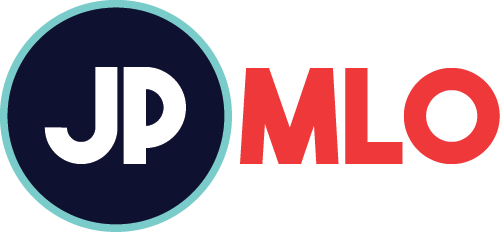The career decision to become a mortgage loan officer in California is a great decision! There are quite a few specific hurdles and processes to ensure are correctly completed in order to not waste time or money. This guide will help you navigate ALL steps and requirements to becoming a licensed MLO in California. We will organize this in 6 steps, each with its own requirements that will take attention to detail. The 6 steps are:
- Register with the NMLS for a personal account
- Determine & complete the correct pre-licensing education
- Schedule & Pass the State Exam required by the NMLS
- Apply for your License
- Pay all fees and complete all paperwork & background checks
- Get sponsored by a Company
Now that you know the steps required to license in California, let’s dive deeper into each one so you have no surprises as you navigate through the process.
Step 1: Register with The NMLS
When you apply for your NMLS account you will also be given an ID Number. This number is CRUCIAL to keep and will be how the NMLS identifies you and attaches all renewals and licensing endorsements or education to you. You will be required to input this ID number with the approved education provider so that they can report it to the NMLS directly.
Since this is the first step to obtaining your California mortgage license is applying for license, you will want to do this ASAP. To begin, go to the NMLS website.
Step 2: Determine & Complete The Correct Pre-licensing Education
Determining the correct Regulatory Agency to license with will largely depend on where you work currently. If you are an individual looking to start your own career, you will likely need to license with the CA-DFPI. But, if you currently work as a licensed real estate agent, you may wish to license with the CA-DRE. Here are some differences and help on how to choose:
CA-DFPI License Overview
The CA-DFPI license is required for any mortgage loan originator employed by a DFPI-licensed lender or broker. This applies to any mortgage lender governed by either California Finance Law (CFL) or the California Residential Mortgage Lending Act (CRMLA). Your Employer must also be licensed by the CA-DFPI. Although this license doesn’t require any real estate licensing, you will be able to originate residential mortgage loan applications or negotiate the terms of residential mortgage loans. Be advised that this option requires sponsorship from a DFPI-licensed employer. More information is available on the DFPI website.
DRE License Overview
The California Department of Real Estate (DRE) issues MLO endorsements to licensed real estate agents. Pursuing a DRE-endorsed license will give you the most career flexibility, however, you will need to complete and maintain the required Real Estate education requirements. More information is available on the DRE website about this option, but the following is true about this option:
- Requires a valid California Real Estate License.
- Requires additional Real Estate Education.
- Requires a Sponsorship from a DRE-licensed Employer.
Completing Prelicense Education
After selecting the appropriate license type, CA-DRE or CA-DFPI, you now have the responsibility to complete the appropriate hours of pre-license education. As a generic rule, The SAFE Act requires state-licensed mortgage loan originators (MLOs) to complete 20 hours of NMLS-approved pre-licensure education courses which include the following:
- 3 hours of Federal law and regulations
- 3 hours of ethics, which shall include instruction on fraud, consumer protection, and fair lending issues
- 2 hours of training related to lending standards for the nontraditional mortgage product market
- 12 hours of undefined instruction on mortgage origination
JPMLO offers all types of Pre-license and continuing education for both the CA-DRE and CA-DFPI. Below are options to select for prelicensure…we recommend bundling together your core SAFE requirements along with the appropriate state elective courses for better pricing and ease of completion.
CA-DFPI
Pre-license Bundle- 3 hours of Federal law and regulations
- + 3 hours of ethics, which shall include instruction on fraud, consumer protection, and fair lending issues
- + 2 hours of training related to lending standards for the nontraditional mortgage product market
- + 12 hours of undefined instruction on mortgage origination
CA-DRE
Pre-license Bundle- 3 hours of Federal law and regulations
- + 3 hours of ethics, which shall include instruction on fraud, consumer protection, and fair lending issues
- + 2 hours of training related to lending standards for the nontraditional mortgage product market
- + 12 hours of undefined instruction on mortgage origination
If you have already completed your National SAFE Core education course elsewhere, or a simply adding California to your portfolio of states, you can select only the California elective portion of the courses:
- CA-DFPI Elective Online Self-Study Course (2-hour Course)
- CA-DRE Elective Online Self-Study Course (2-hour Course)
JPMLO will automatically send your credit of completion to the NMLS registry within 5 business days once you have successfully completed and received your certificate of completion for the chosen course.
Step 3: Take & Pass the SAFE MLO National Test
%
Mandatory Passing Score
Now that your education is complete, you need to schedule an appointment for the national exam. Applicants must pass the National SAFE Exam with a score of 75 percent or higher.
We highly encourage you to start this process as soon as possible because if you do not successfully pass the National SAFE Exam, you must adhere to a waiting period of 30 calendar days from the previous test date prior to retaking the test. If you fail the test a third time, you will then be subject to a waiting period of one hundred 180 calendar days before being able to retake the test.
More testing information, including examination scheduling, MLO Testing Handbook, content outlines, fees, and procedures, is available at NMLS Testing.

